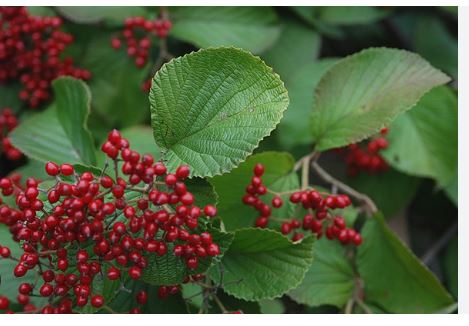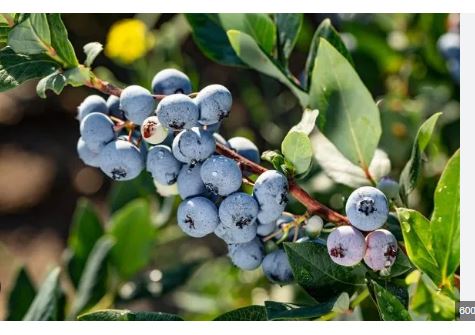
Fruiting and berry-producing shrubs are a brilliant way to blend practicality with natural beauty in any outdoor space. These plants churn out edible treasures—think juicy, sweet, or tart delights—while doubling as eye-catching features with their flowers, foliage, and seasonal shifts. They’re a win for gardeners who want fresh harvests without sacrificing style.
What’s great about these shrubs is their range of flavors and uses. Some offer fruits perfect for snacking right off the branch, while others shine in jams, pies, or even homemade wines. They cater to different climates and soils, so there’s always a fit, whether your yard basks in sun or hides in shade. Plus, many attract pollinators, boosting your garden’s ecosystem.
Low maintenance is another perk these plants bring to the table. Once settled, they often need little more than basic pruning and occasional water to keep producing. Their resilience makes them ideal for busy folks or anyone aiming to cut down on garden chores while still reaping a tasty reward year after year.
Beyond the harvest, these shrubs add structure and charm to landscapes. They can line a path, fill a corner, or even thrive in pots, offering flexibility for small or sprawling spaces alike. With colors that pop and textures that stand out, they turn a functional food source into a year-round visual treat.

Fruiting & Berry-Producing Shrubs
Blueberry (Vaccinium spp.)
A fan favorite, this shrub pumps out sweet, antioxidant-rich berries in summer. With fiery fall foliage and a compact size, it’s as ornamental as it is productive.
Raspberry (Rubus idaeus)
Nothing beats fresh raspberries straight off the cane. This fast-grower offers juicy red or golden fruits and thrives in sunny spots with minimal fuss.
Blackberry (Rubus fruticosus)
Bold and brambly, blackberries yield plump, dark berries perfect for jams or snacking. Their thorny canes add a wild edge to any garden.
Elderberry (Sambucus nigra)
Clusters of deep purple berries make this shrub a standout for syrups and wines. Its lacy leaves and white flowers are a bonus for pollinators.
Currant (Ribes spp.)
Whether red, black, or white, currants dangle like jewels from this hardy shrub. They’re tart, versatile, and happy in partial shade.
Gooseberry (Ribes uva-crispa)
These spiky shrubs produce tangy green or reddish berries that shine in desserts. They’re tough, cold-tolerant, and low-drama growers.
Serviceberry (Amelanchier spp.)
Also called Juneberry, this beauty offers sweet, blueberry-like fruits and stunning spring blooms. Its fall color seals the deal for year-round appeal.
Haskap (Lonicera caerulea)
Known as honeyberry, this cold-hardy shrub yields elongated, tangy berries early in the season. It’s a low-key pick for northern gardens.
Chokeberry (Aronia spp.)
Red or black berries pack a nutritional punch on this tough shrub. It’s drought-tolerant and lights up with vivid autumn hues.
Pineapple Guava (Feijoa sellowiana)
This evergreen surprises with sweet, tropical-flavored fruit and edible flowers. Its silvery leaves make it a double-duty stunner.
Highbush Cranberry (Viburnum trilobum)
Bright red berries hang on into winter, great for sauces or jellies. Its maple-like leaves and white blooms add classic charm.
Fig (Ficus carica)
In warmer climates, this shrubby tree delivers luscious, honeyed figs. Its big, lobed leaves bring a Mediterranean vibe to your yard.
Natal Plum (Carissa macrocarpa)
This coastal toughie churns out deep red, plum-like fruits with a cranberry-tart kick, ripening year-round in warm climates. Its glossy evergreen leaves and fragrant, star-shaped white flowers make it a hedge-worthy beauty, though watch out for the thorns when harvesting.
Sea Buckthorn (Hippophae rhamnoides)
A cold-climate warrior, this shrub explodes with bright orange berries loaded with vitamin C—think tart and zesty for juices or oils. Its narrow, silvery leaves shimmer in the wind, and it’s hardy enough to handle poor soils and salty air.
Goumi (Elaeagnus multiflora)
Speckled red berries with a sweet-tart bite dangle from this under-the-radar shrub, ready for snacking or preserves by late spring. Its silvery-green foliage and subtle, fragrant blooms add a soft charm, plus it fixes nitrogen to boost nearby plants.
Autumn Olive (Elaeagnus umbellata)
Don’t let the name fool you—this shrub pumps out silvery-red berries in late summer, bursting with a juicy, slightly astringent flavor. Its speckled leaves and vigorous growth make it a standout, though it can spread fast in some areas.
Rose Hip (Rosa spp., especially Rugosa)
Pick a rugged rose like Rugosa, and you’ll get fat, orange-red hips packed with vitamin C—perfect for teas or jams. The crinkled leaves and fragrant blooms (pink or white) keep it pretty, and it shrugs off drought like a champ.
Salal (Gaultheria shallon)
Deep purple, blueberry-like berries hang from this evergreen, offering a mild, sweet taste for fresh eating or jellies. Its glossy, leathery leaves thrive in shade, making it a woodland gem with a laid-back vibe.
Cornelian Cherry (Cornus mas)
Bright red, cherry-like fruits ripen in late summer, delivering a tart, complex flavor for sauces or drying. This small tree-shrub dazzles with early yellow blooms and textured bark, holding its own through tough winters.
Medlar (Mespilus germanica)
Quirky brown fruits with a spiced, apple-pear mashup taste emerge after “bletting” (softening post-frost). Its twisted branches, big white flowers, and golden fall leaves make it a medieval-chic conversation starter.
Buffaloberry (Shepherdia argentea)
Silvery foliage sets the stage for tart, red or yellow berries that foam up in jams—think Native American traditions. It’s a dryland survivor with a shaggy, natural look that draws birds and adventurous cooks.
Saskatoon (Amelanchier alnifolia)
A close cousin to serviceberry, this shrub yields sweet, nutty purple berries by midsummer, rivaling blueberries in pies. Its white spring blossoms and golden fall hues keep it gorgeous across seasons.
Jostaberry (Ribes x nidigrolaria)
A currant-gooseberry hybrid, this thornless wonder drops big, blackish berries with a bold, tangy-sweet punch. Vigorous and disease-resistant, its arching branches fill out fast with minimal coaxing.
Honey Locust (Gleditsia triacanthos)
Technically a tree, dwarf varieties work shrub-style, producing long, twisted pods with a sweet, edible pulp inside. Its feathery leaves glow yellow in fall, though thorns and messiness might demand a bit of cleanup.
Silverberry (Elaeagnus commutata)
Tiny, silvery berries with a dry, mealy sweetness ripen in late summer, great for nibbling or drying. This shrub’s shimmering, silver-gray leaves and tough-as-nails attitude make it a striking choice for harsh climates or poor soils.
Barberry (Berberis vulgaris)
Bright red or orange berries dangle like ornaments, offering a tart, citrusy zing for jellies or sauces. Its spiny branches burst with yellow spring flowers and fiery fall color, adding multi-season punch to any spot.
Mahonia (Mahonia aquifolium)
Also called Oregon grape, this evergreen pumps out dusty blue berries with a sharp, juicy bite—think jams or wine. Glossy, holly-like leaves and clusters of yellow blooms make it a woodland stunner year-round.
Arctic Raspberry (Rubus arcticus)
Petite, ruby-red berries pack a floral, honeyed flavor, ripening in small batches for a rare treat. Low-growing and cold-hardy, its delicate green leaves hug the ground, perfect for northern rock gardens.
Snowberry (Symphoricarpos albus)
White, waxy berries cluster on arching branches, edible but bland—better for wildlife than your plate. Its soft pink flowers and dense growth bring a cottage-core charm with zero fuss.
Pomegranate (Punica granatum ‘Nana’)
The dwarf version of this classic yields small, ruby-red fruits with that signature tart-sweet crunch. Glossy leaves, orange blooms, and a compact size make it a patio or border showstopper in warm zones.
Lingonberry (Vaccinium vitis-idaea)
Tiny, bright red berries deliver a cranberry-like tang, ideal for sauces or preserves. This low, evergreen spreader thrives in acidic soil, with dainty white flowers adding subtle spring flair.
Spicebush (Lindera benzoin)
Glossy red berries (on female plants) offer a spicy, allspice-like kick for teas or seasoning, ripening in fall. Its aromatic leaves turn buttery yellow, lighting up shady corners with quiet elegance.
Beach Plum (Prunus maritima)
Small, purple plums with a tart, wild flavor dot this coastal shrub, perfect for jams or adventurous snacking. Windswept branches and white spring blooms give it a scrappy, seaside appeal.
Red Mulberry (Morus rubra)
Dark, juicy berries cascade in summer, tasting like a sweeter blackberry with a hint of earthiness. This shrubby tree’s heart-shaped leaves and fast growth bring a lush, fruitful vibe—birds will fight you for them.
Clove Currant (Ribes odoratum)
Black berries with a mild, sweet-tart flavor follow fragrant, clove-scented yellow flowers in spring. Its lobed leaves and upright form make it a pollinator-friendly pick with old-school charm.
Thimbleberry (Rubus parviflorus)
Soft, red berries crumble into a raspberry-like sweetness, ripening mid-summer on thornless stems. Big, fuzzy leaves and white blooms give it a woodland softness, thriving in cool, moist shade.